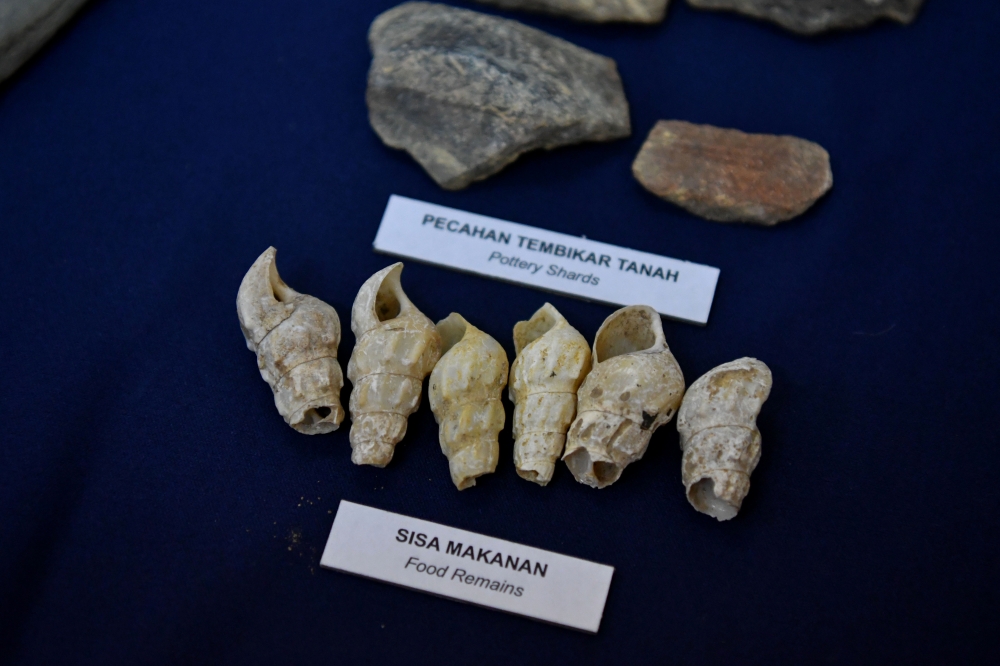GUA MUSANG, Aug 22 — A total of 71,289 heritage and prehistoric artefacts have been discovered and removed from the Nenggiri Valley, which is the site for the construction of a hydroelectric dam.
National Heritage Department Archaeology Division director Zaharudin Abu said that this number includes 16 skeletons, stone tools, pottery fragments and other items.
He said that the 16 skeletons are currently at the Heritage Department for conservation and further research, while the rest are stored in a special facility of Tenaga Nasional Berhad (TNB).
He explained that all these discoveries are the result of salvage research and excavation work carried out on 13 limestone caves affected by the construction of the Nenggiri hydroelectric dam project.
“The research and excavation work began in March 2022 and concluded in October last year. During this period, our most significant find was a complete human skeleton in Gua Keledung Kecil, estimated to be between 14,000 and 16,000 years old,” he told reporters in Pos Tohoi here.
Zaharudin said that TNB will also set up a mini-gallery to display all the national heritage artefacts to the public, allowing for appreciation of the artefacts discovered in Nenggiri.
“This is an opportunity for the community and the archaeological tourism sector in Kelantan and the economic benefits will be felt by the people of the state.
“The Heritage Department will also request that UKM (Universiti Kebangsaan Malaysia) nominate the human skeletons from Gua Keledung Kecil to be gazetted under the National Heritage Act 2005 (Act 645),” he said.
He explained that this step is part of efforts to ensure the proper preservation of these objects once they are officially gazetted.
“I also urge all residents in the Nenggiri area who find any artefacts or objects of significant heritage value, to report them to the district office or the state government.”
“The Heritage Department will discuss with the state government the gazetting of sites in Kelantan, as the state is rich in heritage, archaeological sites and structures,” he said, adding that under Act 645, gazetting a site requires the approval of the state government.

Meanwhile, Senior Fellow at the Institute of the Malay World and Civilisation at UKM, Associate Professor Dr Zuliskandar Ramli, said that they had urgently conducted salvage work on prehistoric materials at the dam construction site, as the area would soon be submerged.
“All prehistoric materials and artefacts discovered in the 13 limestone caves in Nenggiri affected by the hydroelectric dam construction have been completely removed.
“Therefore, we consider that no more prehistoric materials or artefacts will be found in those caves,” he said.
The RM5 billion Nenggiri Hydroelectric Project is expected to be completed by mid-2027 and will create a main reservoir lake covering 53.84 square kilometres and a flow regulation pond of 0.97 square kilometres.
The project, which has entered the construction phase, will create 2,000 job opportunities for the Orang Asli community and local residents and is set to generate 300 megawatts (MW) once operational.
Additionally, the project is expected to enhance the capacity for renewable energy in Peninsular Malaysia, playing a significant role in the country’s energy transition and strengthening efforts to ensure a stable and reliable electricity supply for the people and the nation. — Bernama



















